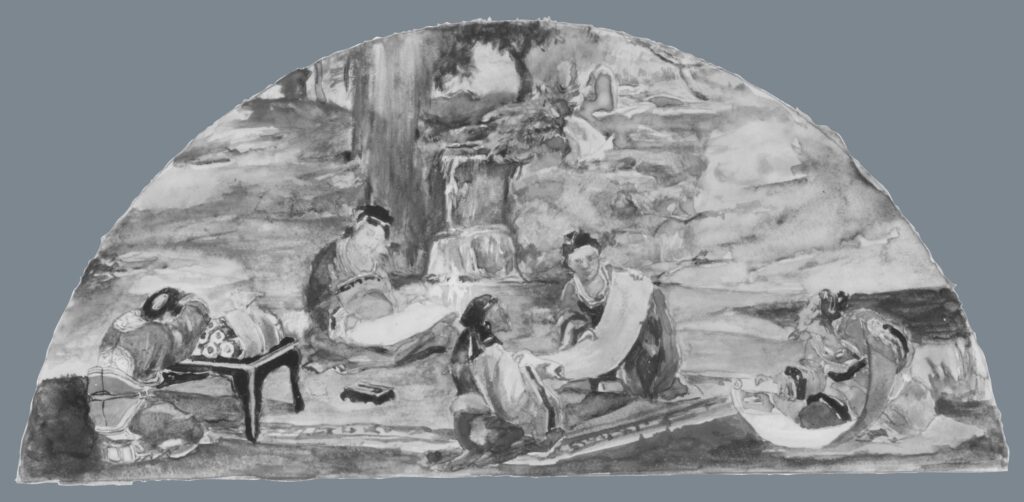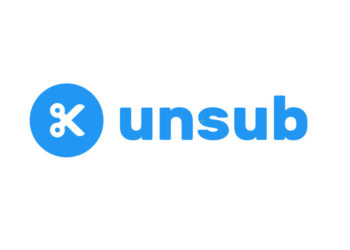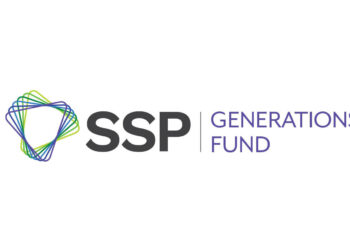Like the Holdren Office of Science and Technology Policy (OSTP) Memo before it, the Nelson OSTP Memo articulates a “Green” public access mandate. Federal agencies are directed to ensure that “all peer-reviewed scholarly publications authored or coauthored by individuals or institutions resulting from federally funded research are made freely available and publicly accessible by default in agency-designated repositories without any embargo or delay after publication.”
In a subscription world, the effort to develop and maintain federal agency repositories of funded research is an understandable expense; the enabled public access is an alternative to paywalled access. But as the Nelson Memo catalyzes a shift to open access publishing and the overall shift towards an open access world continues inexorably, should we reconsider the double-cost of this repository approach, given that the green public access copy will duplicate already provided open access?

The Business Models for Green
From our decade of experience with the Holdren Memo, we can anticipate that, over time, compliance routes will be worn into well-trodden pathways baked into publisher and institutional workflows. In general, librarians in the United States have been spared the burden shouldered by our colleagues across Europe, where administering block grants and transformative agreements, monitoring researchers compliance, and providing for institutional reporting has grown to a substantial component of the library’s portfolio of responsibilities, at times crowding out other services and support for scholarship and learning.
Instead, for the majority of research outputs subject to the Holdren Memo, publishers have ensured compliance via CHORUS and automated deposit in repositories on behalf of authors, alleviating researcher and institutional burden. The embargo period allowed under the Holdren Memo helped to shore up the value of library subscriptions, particularly in the time prior to the more widespread development of preprint and other alternative copy servers and before the availability of reader-facing tools for locating off-publisher platform copies of articles such as the Open Access Button. In other words, the business model for this “green” public access to paywalled articles was subscriptions, i.e., Green-via-Paywall.
Researchers subject to the Holden Memo who choose to publish a “gold” version of record are also subject to the “green” mandate, though with no need to be concerned about the embargo period per se. The business model that supports the “green” public access to these articles is typically an article processing charge (APC), though transformative or pure publish agreements, Subscribe to Open, and various other subvention and membership models that fund Gold articles are also in play. This is Green-via-Gold.
Accelerating Towards Green-via-Gold
In the coming years, as the Nelson Memo comes into force, I believe we are going to see an accelerating shift from Green-via-Paywall to Green-via-Gold in the United States.
Some hybrid publishers are already routing manuscripts subject to zero-embargo funder mandates to Gold pathways. For example, the Plan S Rights Retention Strategy (RRS) statement enables zero-embargo. But, cOAlition S leaders have shared that publishers transfer manuscripts to Gold when authors include the RRS: “Elsevier does not allow for RRS. When they see Gates funding acknowledged they say it’s APC or C your way out.”
Other publishers have made explicit policy statements documenting their reasoning and response. For example, Springer Nature explains that “our research journals are now either fully OA journals or Transformative journals offering authors the opportunity to make the superior final version of record OA … Plan S-funded authors will therefore be directed to select the gold OA route, as preferred by cOAlition S funders, and this will be explained to them at submission.” We can anticipate publishers taking a parallel approach to the Nelson Memo zero-embargo requirement.
Additionally, we are starting to see growth in the number of journals flipping from subscription/hybrid to fully open. As examples, Cambridge University Press flipped 39 titles in 2023, Wiley flipped 37, and Springer Nature flipped 10. I predict this will continue as hybrid publishers are challenged to maintain the subscription side, as its value is eroded because of transformative agreements, particularly in Europe, which drive upwards the percentage of open access content in particular titles. The value of subscriptions is further diminished by alternative copy availability, piracy, and other leakage. As hybrid journals flip to open access, they only offer Green-via-Gold. And, Green-via-Gold is already the sole option from open access-only publishers such as PLOS and MDPI.
And, of course, given that the Nelson Memo also says that “federal agencies should allow researchers to include reasonable publication costs … as allowable expenses in all research budgets,” the easiest path to institutional compliance will be by requiring researchers to budget APCs and the like into grant applications. Researchers themselves may be unhappy with this requirement, but grants offices are quite familiar with researcher unhappiness with other budgetary (e.g., indirect costs) and compliance requirements and so that is unlikely to be a deterrent to such a policy.
Now, some may argue that publishers should allow zero-embargo under Green-via-Paywall and trust that librarians will not drop their subscriptions. This may be possible for a high prestige title with a substantial number of print subscribers; however, given library uptake of Unsub as a mechanism to decrease library spend on subscriptions, this seems unlikely to be broadly allowed by publishers.
Examining the Double-Cost
What’s notable is that both Green-via-Paywall and Green-via-Gold are double payment strategies for public access. In addition to libraries and institutions paying the costs of subscriptions or publishing services, U.S. taxpayers are paying for the development and support of agency repositories.
In a subscriptions world, this approach has a logic because public access is an alternative to paywalled access and funding repositories is less expensive than a subscription for the entire U.S. population.
But, in an open access world, open access is public access. And, it is public access to the version of record, which has been through the publisher’s editing and typesetting process, is linked up with researcher workflows, discovery services, DOI resolvers, and the like, providing for a better discovery and access experience, and is better connected to bibliometrics and researcher information management systems, maximizing impact measures for the published work.
As the system flips to Gold – and thus to Green-via-Gold, will it still be useful to continue to invest in the cost of Green depositing? It is true that the repositories provide an agency-wide record of funded research outputs and serve as the basis for various search and discovery tools. Building these databases will only become easier with the Nelson memo mandates related to metadata and persistent identifiers, which will strengthen linking from the agency databases to the published scholarship. But, is capturing and maintaining files that duplicate the publisher-hosted files necessary to achieve these ends? Given the expansion of investment in agency-designated repositories that implementing the Nelson Memo requires, it is worth considering those investments during this transitional time in light of a fully open access future.
Discussion
35 Thoughts on "The Double-Cost of Green-via-Gold"
What we should be asking ourselves is why we need Gold if we have Green. It is amazing how we have ignored the main strategy of the Budapest Open Access Initiative (self-archiving) only to sustain the commercial publishing industry. The next step is to shut down public repositories. It makes all the sense in the world!
Indeed, a good question. Perhaps this piece analyzing the implications of current policies and trends will in part motivate that analysis. Though whether one can organize a coalition to apply the brakes enough at this point to stop off the publishing system from flipping to open access predominantly …
What about the preservation of this material? The journal ends and its collection disappears… repositories also have a preservation role.
I’m not sure that agency repositories archiving copies of the research they fund help so much with journal preservation given very few (if any) journals would have all their articles from federally-funded researchers. Services likes CLOCKSS and Portico better address this by being preservation archives of journals rather than a sampling or articles.
Also worth considering that government agencies are subject to the whims of whoever is in power at the time, not to mention the always-shifting funding landscape. Should PubMed Central, which has existed for all of 23 years, be seen as more permanent and reliable than academic publishers like Oxford University Press and Cambridge University Press, each in existence for more than 500 years? (Elsevier 143 years, Wiley 206 years).
But I think you’re absolutely on the mark Lisa — we’re going to be seeing US funding agencies declaring what constitutes an acceptable data repository for funded authors in the near future, and part of that will require long term archiving and preservation, presumably through services like Portico, LOCKSS, and CLOCKSS. Seems like that same approach could be applied to published papers.
You must be joking. It is exactly the opposite. After terminating our journal contract with our previous publisher, they deleted all content without any respect for preservation or breaking the DOIs. We had to negotiate with crossref to redirect the DOIs. The moment the publisher’s contract with crossref is terminated, they will also be deleted, making all the content of 20 years of scientific output inaccessible.
Wow! Sounds like you chose a really poor publishing partner. Perpetual archiving is a key sign of a reputable publisher (even most preprint servers and data repositories are adopting/have adopted the use of Portico or LOCKSS or CLOCKSS these days). I spent 10 years writing contracts for a publisher with research societies, and now negotiate contracts with publishers on behalf of societies. Ensuring preservation and that the publisher follows the TRANSFER Code of Practice (https://www.niso.org/publications/rp-24-2019-transfer) are things one needs to insist on.
De Gruyter Open. They use Portico I think but it’s useless because these versions are not available and you cannot redirect the DOIs. So, for all practical purposes the manuscripts become unaccessible.
I find this argument to be rather provocative, which I’m sure is the intention. Thanks for outlining these important issues. I’m in agreement with you in that the publishers will indeed shift toward Gold. I also agree we should think carefully about who should bear the funding and workload burden of compliance–for many US institutions, the library can’t do it alone.
However, I agree with Pandelis above: the question ought to be “why Gold?” not “why Green?”. What is expedient is not always what is right. Publishers are offering an easy market-based solution that will continue to leave the future of scholarly communication under their control…control exerted in some cases by commercial operations seeking to extract a profit from a lucrative pool of low-cost or no-cost labor funded by taxpayers. Publishers’ interests do not always align with the interest of researchers, institutions, or the public good; it is our job to ensure the interests of scholarship and the scholarly record are prioritized first.
In my opinion, to do that, we must continue to decouple scholarly communication from commercial publishers rather than further intertwine and embed ourselves into systems that are designed to serve market needs first and scholars’ needs second. Strengthening our repository support system is one way to do that. Publishers can and will find a way to provide services to scholars even in a Green OA environment–it is their job to adapt to the new situation in which they find themselves.
As Lisa states, the situation in Europe has put a considerable burden on libraries. CORE (https://core.ac.uk/) has for several years assisted libraries in the UK to show compliance and to meet funder requirements for OA. The compliance has been managed not via publishers, but via authors depositing their own content in institutional repositories, with the library then checking every uploaded article for metadata such as the date of deposit. In the UK, CORE was subsidized for many years by JISC, but JISC announced this funding will end from August 2023. As a result, CORE is switching to a membership model, supported voluntarily by the institutions it works with, and providing compliance-checking tools, most importantly cross-repository checking – papers with multiple authors may be deposited at one or more of several repositories, and CORE finds the article wherever it is held. There will be a similar problem in the USA, given that under the Nelson Memo, federally-funded research can be deposited in any of the “agency-designated repositories”, leaving the institution guessing which one has been selected.
Experience under the Holdren leads me to expect we won’t be guessing as all agencies with a deposit mandate in place do specify a particular repository already.
Apologies. But I found this piece difficult to parse. I am not sure what the agenda is here – but, at first take, it seems that the objective is to cast doubt on Green OA and on the requirement to build institutional repositories. This is misguided. Ultimately the Green option is strategically and long term the only viable one because it is the only one that loosens the increasingly costly financial stranglehold of legacy publishers on journal publishing, including OA (and on library budgets).
The legacy publishers have cleverly provided their own so-called “Open Access” and hybrid versions, but in many instances this has permitted “double dipping” as they gain both APCs and subscriptions. Unfortunately the Gold option preserves the position of legacy publishers, which is why they advanced it as their preferred option in the first place. In the end, it is only with institutional repositories that libraries, and the academic, scholarly and scientific world more broadly, can start to weaken the monopoly position of the traditional legacy model since it provides the only viable alternative to the copyright claims of publishers.
To many OA looked like a promising option to the established model of legacy journal publishing, but unfortunately with that came APCs, predatory journals, and ultimately cooption by the publishing giants. So, let’s not cast doubt on the Green option and institutional repositories; truth is it is the only game in town if we are to weaken the lucrative publishing monopoly to which we as scholars (and librarians) are now beholden.
Not sure what’s meant by “agenda” but the point is to observe the trends and ask about implications of them. I don’t see how the system doesn’t flip to predominantly Gold OA in the coming years. That will have consequences and thinking about those consequences now is strategically important.
I’m confused by something … what requirement to build institutional repositories? The Nelon memo doesn’t require IRs…
As I understand it Green OA requires an institutional repository.
As I understand it, Green OA requires institutional repositories where a copy of the research item is deposited, free of copyright restriction. And the beauty of this is that it strengthens the hand of libraries in negotiating with legacy publishers because they no longer have an exclusive copyright.
Right now we simply do not have a competitive market because of the exclusive nature of publisher’s copyright. Without a competitive market the legacy publishers have limited incentive to lower prices (in fact, they never do). I became aware of this when I was a Senior Editor at a time when we transitioned from paper to digital, which would have greatly reduced publisher costs (printing and postal), but the libraries and the academic community saw none of this saving. It went straight to the publisher’s bottom line.
So, advancing to Gold OA without Green as a back-up does not advance the cause that surely libraries should be promoting of more cost-effective contracts and reducing the burden on budgets.
Re: the argument that doing away with print somehow makes everything massively cheaper. Please see this post:
https://scholarlykitchen.sspnet.org/2017/08/24/revisiting-technology-will-not-get-cheaper/
Maybe, but I am talking about converting from paper. The other thing I picked up was the margins of the publishers, which were about 40%, all built on much work done for “free” on the public dime (including loss of author IP). I am not anti-capitalist, but there is something that needs looking at in a market that consistently delivers margins over, say, 10%. And they gobbled up the independents like SSRN. I don’t have any skin in the game any more, but it does worry me the way the strengths of academia – other-worldly non-material orientation, scholarly independence and individualism, fragmented and competitive disciplines and agencies – also work to weaken its ability to claw back some of the rewards for its hard work to help fund the scholarly task.
Paper is not as expensive as many people think, but digital is way more expensive than it seems, and unlike paper, has constant maintenance and upgrading costs.
As far as the margins, not all publishers make that level of profit, and it’s always best to support those in the non-profit sphere who do good work (and make lower surpluses, which they largely reinvest back into the field). But you’re right, market consolidation has made those increasingly few and far between.
In the early days we were handling paper manuscripts by post, and then sending them out the same way for review! Caxton would have been doing something similar a millennium earlier?
Green does not require an institutional repository. See for example the Holdren mandate, also a Green mandate, which has been in effect for years.
To be effective it should be. Any academic institution I have been associated with has shown an interest in preserving the research outputs of its staff, and the best way of doing that is by some kind of repository. I just don’t understand how it can be helpful to take a minimalist approach. Yes, sure, “self-archiving” meets the letter of the requirement, but not the spirit. See this definition https://guides.libraries.psu.edu/open-access/green#:~:text=In%20essence%2C%20successful%20green%20open,i.e.%2C%20a%20repository).%22
Yes, repository. Not institutional repository. The Holdren and Nelson memos mandate agency-designated repositories. None of the repositories that have been designated are institutional repositories.
When talking public funding of research, why should expending monies so non-subscribers can read a publication (gold) ever be part of the conversation when the free self-archiving of same publication (green) is available?
For when it’s not?
But that’s why Green has to remain part of the picture. If you lose Green, non-subscribers can never see even an author’s copy – and the library loses any leverage in price negotiations.
If the only Green is Green-via-Gold … as I write here the trends point to, the leverage has been lost.
A self-fulfilling prophecy maybe?
Open Pharma’s OA analysis shows a clear trend away from Green in recent years. It’s being replaced by Gold but also by Hybrid (especially in the case of publications with authors from the pharmaceutical industry). https://www.lens.org/lens/report/view/**Live-open-access-analysis**/14572/page/14573
As well as identifying current trends in a descriptive sense, in “The Scholarly Kitchen” should we not also be evaluating the impact of these trends on the scholarly quality of work being published?
I ask this because I am getting the impression that author fees via various systems of OA are turning into a major source of revenue, not just for new, upstart publishers, but the legacy ones as well. Does this matter?
There is the issue of whether everybody has access to those author fees and OA ends up undermining one of its major objectives, which was to make publishing more accessible, particularly to those without the status and resources of established figures.
But the other issue is the quality of the work. In the case of so-called “predatory” publishers it is self-evident that quality has been completely sabotaged and that what we are dealing with is large-scale scientific and financial fraud with scant if any legitimate peer review, plagiarism, “paper mills” etc. But even at the most established and “respectable” publishers there is clearly a financial incentive to increase the volume of output. An extreme case is the developments at Wiley where it now seems that their Hindawi imprint has been indulging in massive special issues with major potential risks in suspect peer review and authorship. Not only that, but there is a case of the publisher seeming to apply pressure to an established, high-status title to greatly increase the volume of production, and academics are pushing back because of the potential impact of volume and speed on the quality of the work published and hence the reputation of the title.
So, at some point, it would be interesting to see what impact these “trends” are having on the quality of work being published. I know in my own instance where I have reviewed papers for open versions of established titles, the quality requirements seem to be far less stringent – to the extent where the objective of the editors seemed to be less about improving the paper to an acceptable standard and more about getting it turned round rapidly. I also recently reviewed a paper for an upstart OA publisher whose reputation I find hard to judge, but I found that I ended up basically re-writing the paper I was reviewing practically from scratch. It was also a case of “open peer review” so I saw what the other reviewer did, and they did practically nothing to improve the paper.
In other words, there are trends and developments in scientific/scholarly publishing that may be troubling and worthy of discussion rather than just description, and maybe this is an area where The Scholarly Kitchen can do a good job of shining a light and maybe also leading the way in helping us navigate these new waters in the interests of not only of access to authors and readers but also tot the quality (and integrity) of the scientific and scholarly product as well.
Let’s see (off the top of my head, probably more on each topic). Lots of discussion and opinion in the following:
Equity and affordability of APCs:
https://scholarlykitchen.sspnet.org/2020/10/28/in-search-of-equity-and-justice-reimagining-scholarly-communication/
https://scholarlykitchen.sspnet.org/2020/10/21/ask-the-community-equitable-participation-in-open-research/
https://scholarlykitchen.sspnet.org/2019/10/24/ask-the-chefs-oa-business-models/
https://scholarlykitchen.sspnet.org/2020/02/04/guest-post-a-plea-for-fairer-sharing-of-the-true-costs-of-publication/
https://scholarlykitchen.sspnet.org/2019/11/07/guest-post-transparency-what-can-one-learn-from-a-trove-of-invoices/
https://scholarlykitchen.sspnet.org/2018/09/20/plan-t-scrap-apcs-and-fund-open-access-with-submission-fees/
https://scholarlykitchen.sspnet.org/2016/10/10/can-highly-selective-high-end-journals-survive-on-apcs/
https://scholarlykitchen.sspnet.org/2019/10/23/guest-post-the-future-of-open-access-business-models-apcs-are-not-the-only-way/
Predatory Publishing:
https://scholarlykitchen.sspnet.org/2022/11/28/the-predator-effect-fraud-in-the-scholarly-publishing-industry-an-interview-with-simon-linacre/
https://scholarlykitchen.sspnet.org/2017/12/11/guest-post-authors-get-caught-predatory-illegitimate-publishing-net/
https://scholarlykitchen.sspnet.org/2017/12/05/illegitimate-journals-stop-interview-kelly-cobey-larissa-shamseer/
https://scholarlykitchen.sspnet.org/2018/08/07/denialism-rocks-just-got-lot-harder-pretend-predatory-publishing-doesnt-matter/
https://scholarlykitchen.sspnet.org/2020/02/05/indias-fight-against-predatory-journals-an-interview-with-professor-bhushan-patwardhan/
https://scholarlykitchen.sspnet.org/2015/05/11/should-we-retire-the-term-predatory-publishing/
https://scholarlykitchen.sspnet.org/2019/10/28/citation-contamination-references-to-predatory-journals-in-the-legitimate-scientific-literature/
https://scholarlykitchen.sspnet.org/2017/02/28/predatory-publishing-rational-response-poorly-governed-academic-incentives/
Paper Mills:
https://scholarlykitchen.sspnet.org/2023/03/30/guest-post-of-special-issues-and-journal-purges/
https://scholarlykitchen.sspnet.org/2023/04/04/guest-post-addressing-paper-mills-and-a-way-forward-for-journal-security/
https://scholarlykitchen.sspnet.org/2022/09/23/guest-post-integrity-and-trust-in-peer-reviewed-literature-will-journals-be-alone-in-doing-the-heavy-lifting/
https://scholarlykitchen.sspnet.org/2022/09/20/guest-post-peer-review-and-research-integrity-five-reasons-to-be-cheerful/
https://scholarlykitchen.sspnet.org/2021/02/04/guest-post-unethical-practices-in-research-and-publishing-evidence-from-russia/
More generally on peer review:
https://scholarlykitchen.sspnet.org/collection/peer-review/
So, you could write a book on it! The next thing is to shift the dial, but looks like that is very hard to do. Must be a bit discouraging.
Scholarly publishing is largely a service industry that reflects the community we serve — academia. Academia has an incredibly conservative and slow moving culture. There’s an old line that “science advances one funeral at a time.” So a slow pace in re-making an essential component of such a culture is not really surprising, particularly given how tied-in it is with the career and funding structures of that culture, which seem even more entrenched.
Also food for thought, from a post that will be out in the next week or two:
“While scholarly journals have often been criticized as being overly reliant on outdated processes and resistant to change, the truth is that nearly every facet of scholarly journal publishing has undergone tremendous change over the past 20 years. The nearly ubiquitous use of online peer review systems, machine readable metadata and license information, standardized XML formats, DOIs, ORCIDs, plagiarism detection tools, A&I databases, and the online availability of virtually all published content has transformed the production and dissemination of scholarly journals and made them available to a global audience of authors, editors, reviewers, and readers. “
BTW, thanks for the off the top of the head topical reading list. Lots there I’d missed, with some good news along with all the problems. My Screen Time tattle app will show a surge.



